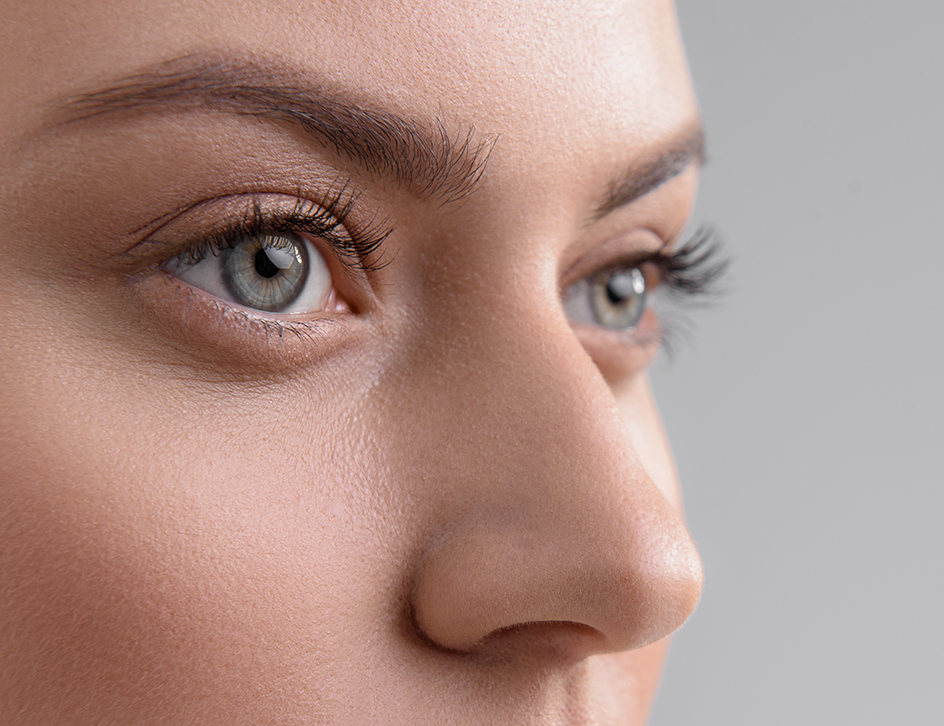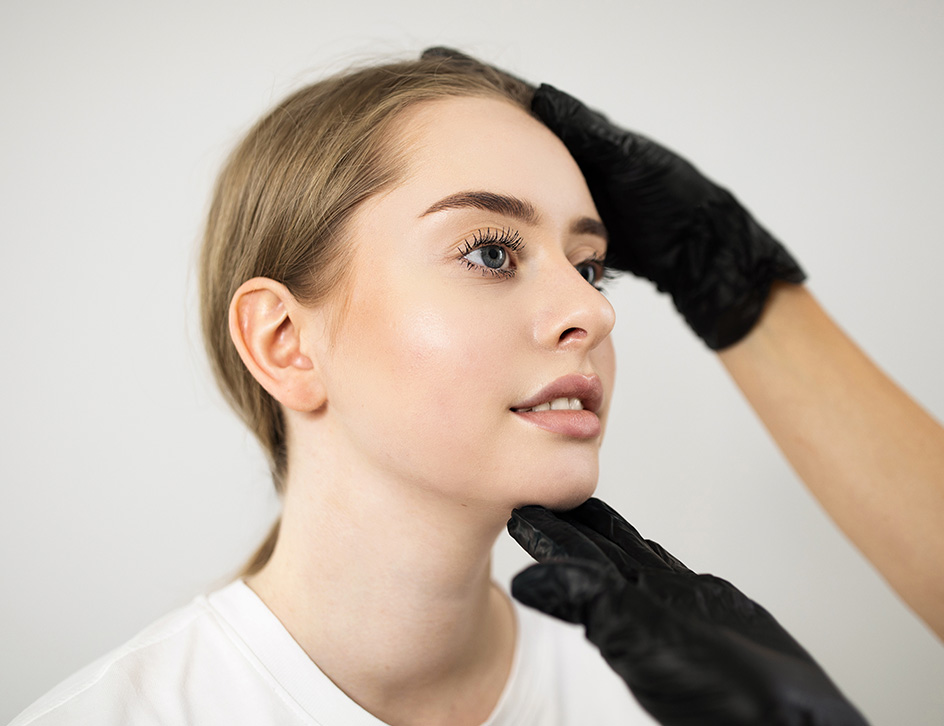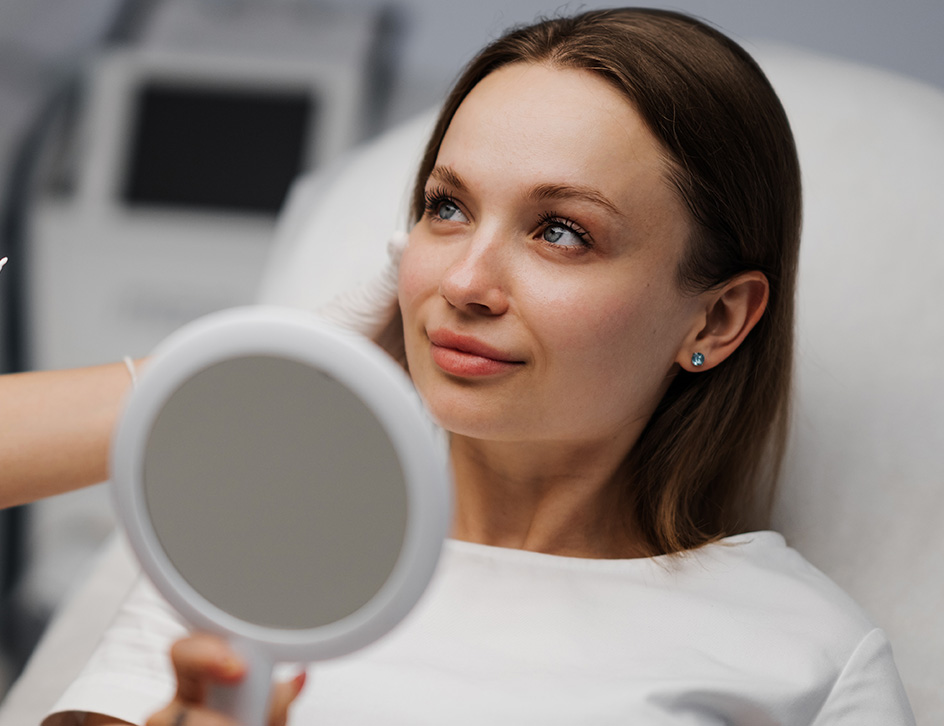Is Rhinoplasty Surgery Painful?
It’s logical to be concerned about pain when you are talking about treating the most delicate part of your face, your nose. So, is severe pain involved in this nose-reshaping surgery or just a little discomfort? Here, we will share an insight into what you can expect from rhinoplasty surgery and what you can do to best manage any pain and prepare for a smooth surgery experience.
Requesting the highlighted section below be removed as no two procedures will be done the same so a generalisation cant be made here
Kambiz Golchin, an experienced rhinoplasty surgeon, uses the following procedure for nose job surgery:
- Mr Golchin makes a small incision on the columella or nostril, depending on the type of rhinoplasty.
- Then, your nasal cartilage or bone is removed or reshaped to get the desired shape.
- The incision is closed, and the patient is put on a cast or splint to support the nose.
- The cast is removed after a few days of the rhinoplasty surgery.

Pain in rhinoplasty stages
Rhinoplasty is a surgical procedure that involves reshaping the nose. It can be performed for aesthetic purposes, to enhance the appearance of the nose, or for functional reasons, such as correcting breathing issues or deviated septum. The good news is that pain related to the procedure pain is not something to worry about. There is a small discomfort associated with the treatment, that goes away with time.
Each of us have different tolerance levels for pain however most of our patients say that they felt far less pain than expected and would suggest that pain associated to Rhinoplasty is minimal.
Let’s break down the stages of rhinoplasty surgical procedure and their pain level:
During the surgery
While undergoing rhinoplasty procedures, patients are comfortably numb, thanks to anaesthesia. Depending on the individual, Mr Golchin uses general anaesthesia or sometimes a combination of local anaesthesia and sedation. This means you will be comfortably asleep throughout the procedure.
Immediate post-surgery
As the anaesthesia gradually wears off, patients typically encounter some level of discomfort. It’s not uncommon to feel a sensation of tightness or pressure in the nasal area along with swelling and bruising at this stage, not only in the nose but also in the areas around the eyes.

Post-operative pain
Your rhinoplasty surgeon will provide you with effective pain management strategies, which may include over-the-counter pain relievers or prescription medications to help in managing any discomfort once home following surgery.
Other sensations
In addition to discomfort, patients often report sensations of nasal congestion, as if they have a common cold. This is primarily due to internal swelling and, in some cases, the presence of nasal packing or splints. For those who were under general anaesthesia with a breathing tube, a sore throat from mouth breathing may also be present.
Healing process
The initial days following nose job surgery are generally when discomfort is most pronounced. As time passes, the intensity diminishes. While the majority of noticeable swelling and bruising tends to subside within the first two weeks, some minor swelling may persist for several months as the healing process continues.
Open vs. closed rhinoplasty: Which one is more painful?
The level of pain and discomfort may also depend on the type of rhinoplasty procedure carried out. There are two common forms of rhinoplasty procedure: closed-nose surgery and open-nose surgery
Closed rhinoplasty
In this type of nose job, a small incision is made inside the nose. This means the cut won’t be visible from the outside. Besides, there will be minimal swelling and far less pain. Furthermore, the recovery period is most often shorter. Patients are often back to normal routine in a few days.
This is a less invasive surgery method so very often the preferred method for Mr Golchin, and many other surgeons. Closed Rhinoplasty however, is only suitable for small structural changes, like getting rid of small hump on the nose or sharpening your nasal tip. For more intricate changes, most cases will call for open rhinoplasty surgery.
Open rhinoplasty
In this rhinoplasty surgery type, a small incision is made in the columella region of the nose giving access the nasal bones and cartilage to make the required structural changes. This form of nose job entails some notable discomfort as compared to the closed one.
The open rhinoplasty method involves using gauze, which is removed from the bridge of the nose in 24 hours following the procedure. As a result, upon waking up from an open procedure it is not uncommon for patients to report feeling as though they have a blocked nose however this feeling of congestion is temporary.

How to minimise pain and discomfort after rhinoplasty surgery
Painless surgery is impossible. But luckily, rhinoplasty surgery entails very minimal pain or discomfort and that which is felt, goes away with time. You can also practice the best post-operative care to speed up the recovery process and help elevate any ain.
Here are a few ways to minimise the pain:
Cold Compress
Apply a cold compress around your nose to numb it slightly. This will also help reduce swelling. Do not apply a cold compress directly, as it can disturb your new nose shape. Instead, put ice cubes or a bag of frozen peas packed in a cloth and then apply on the affected areas.
Medication
After the surgery, your rhinoplasty surgeon will prescribe some medication or over-the-counter medicines. It is a good idea to follow all advice from your Doctor to ensure best pain management.
Elevate Your Head
This is the simplest practice to help minimise your level of discomfort. So, whether you are resting or sleeping, use pillows to elevate your head. This is a proven way to minimise swelling and reduce pain.
Avoid Strenuous Activities
After surgery, try to refrain from strenuous activities for at least a month. Activities like lifting heavy weights or bending over increase your blood pressure, exacerbate swelling, and even lead to bleeding. Blowing your nose can also increase discomfort for about a week following treatment

Have A Healthy Diet
Following a healthy diet will always help enhance the recovery period. Patients should also keep hydrated, as it will help reduce throat discomfort arising from breathing via your mouth. Salty foods also exacerbate swelling, so [patients should refrain from any food with high levels of sodium.
Clean the Nose Gently
Keeping your nose clean avoids infection. However, be careful while cleaning your nose and avoid using any harsh material. Always use a soft, damp cotton bud with hydrogen peroxide or any other recommended solution.
Use a Humidifier
Breathing through the mouth can increase dryness and irritation. One way to reduce the likelihood of a dry throat is by using a humidifier. It will keep the air moist and avoid unnecessary discomfort.
Avoid Alcohol and Tobacco
Both alcohol and tobacco are the biggest enemies of your rhinoplasty recovery process. Smoking, in particular, compromises your blood flow, which, in turn, puts your recovery process at stake.
Avoid Stress
Stress can actually increase the perception of pain. Patients are recommended to stay relaxed in the days following treatment.
Follow Post-Operative Instructions
Besides these general recommendations, rhinoplasty surgeons recommend some specific post-operative instructions depending on your individual case. Patients need to follow these instructions to boost the recovery process and enjoy the results of rhinoplasty surgery.

When Should I Call a Surgeon after Post-Rhinoplasty Pain?
Rhinoplasty pain should go away with time. However, if you feel that the pain is not decreasing or is increasing with time, you should see your rhinoplasty surgeon. If any pain is prolonged, it can lead to increased blood pressure, leading to excessive swelling and bleeding.
If you encounter these symptoms, it is best to book a rhinoplasty consultation:
- Persistent or severe pain
- Prolonged visible scarring
- Breathing difficulties
- Uncontrolled bleeding
- Fever or chills
- Swelling, redness, or drainage at the incision site
- Persistent nausea or vomiting
- Changes in your skin colour or sensation
Mr Kambiz Golchin, carries out the whole rhinoplasty procedure with utmost care and always recommends detailed postoperative rhinoplasty care to minimise pain and get the best possible results.

Frequently Asked Questions
How much pain should I expect?
Pain after rhinoplasty surgery is variable. However, most patients state that they felt a minimal to moderate level of pain after a nose job.
How long after surgery will my nose hurt?
The pain usually goes away within the next 36 or 72 hours, but it can be prolonged if your nose is bumped or manipulated. Your nose may stay sensitive to touch for up to three months.
How should I manage my pain?
You can manage your pain by taking medication, using a cold compress, and following a healthy diet. Keeping your head elevated and avoiding tobacco, alcohol, and food containing sodium.
What medication should I use to reduce rhinoplasty pain?
Your rhinoplasty surgeon will prescribe antibiotics, nasal drops, painkillers, prednisolone pills, as well as ointments. You should start this medication within six to eight hours after rhinoplasty.

Final words
Pain is a common concern among individuals considering a rhinoplasty procedure. While it’s natural to have apprehensions, it’s important to understand that the discomfort associated with rhinoplasty is usually manageable and temporary.
The surgical process, post-operative pain management, individual pain tolerance, and patience all play crucial roles in shaping the experience. Patients should carefully select experienced aesthetic plastic surgeons for their rhinoplasty nose job. Rhinoplasty can be a transformative procedure, and for many, the mild to moderate discomfort during the recovery phase is a worthwhile trade-off the improved aesthetics or functionality.
It is important to have a clear discussion with your surgeon about your concerns and expectations. Mr Golchin provides his patients with personalised insights into what they can expect during and after rhinoplasty. It also includes the level of discomfort one may expect based on your specific case.
BOOK CONSULTATION

I was very nervous about getting lip fillers for years, but I got recommended to Mr Golchin and I cannot recommend him enough! He made me feel at ease about the treatment and gave me exactly what I wanted! It was painfree and my results are amazing! – Sarah
SarahI have been attending Mr. Golchin at his clinic in Dublin for Botox & Fillers for quite a few years, with great results. I am never concerned about trying fillers in any new areas of my face or trying any new treatments suggested, as I have complete confidence in Mr. Golchin and his team. It’s very important to me to achieve a natural result while still noticing an obvious improvement and I am never disappointed. – Michelle
MichelleI contemplated rhinoplasty for a number of years and after extensive research I finally decided to go ahead with it in August 2017. To say it was a decision not taken lightly would be an understatement. I wanted the best results and the best surgeon and I can honestly say I got both. Mr Kambiz Golchin is a true professional and perfectionist and it is clear he takes great pride in his work. Mr Golchin established exactly what I wanted and delivered, surpassing my expectations. Bex
BexI had decided many months ago to get rhinoplasty and had since visited a number of the top surgeons in London, after being dissatisfied a friend referred Mr Golchin. From start to finish, including my pre operative care to my end result I could not be happier and would highly recommend Mr Golchin as a wonderful surgeon who has changed my life and I could not be happier with my new nose. – cmbrowne
C Browne

